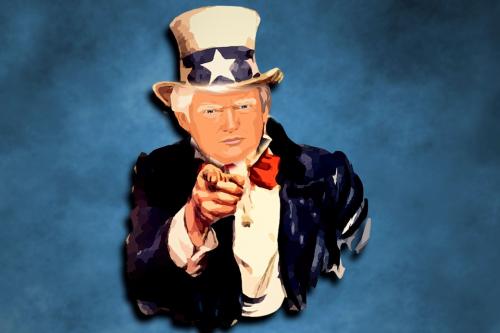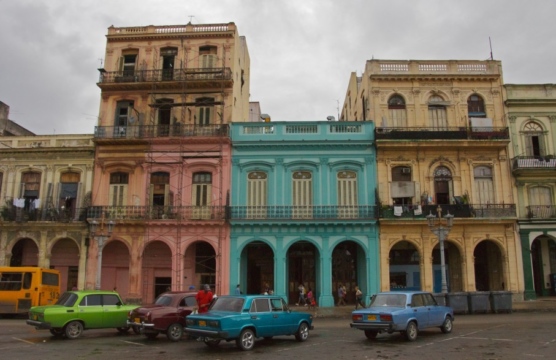A Fatal Blow to Democracy
Nicaragua is on the precipice.
This post is also available in: Español
Over a year ago, as Donald Trump was on one of his tirades full of insults and falsehoods – to which most Americans have, sadly, now become accustomed – I asked an Argentine friend if he had ever heard such aggressive rhetoric from a president before. “Sure I have,” he responded, “but never in English.”
Indeed, the president of the United States is very different from his predecessors (Republicans and Democrats alike) in temperament and language. For many, Trump’s style evokes some Latin American leaders such as Juan Peron and, more recently, Hugo Chavez. Although it is always risky to make comparisons, it is hard to ignore their similarities, including disdain for democratic institutions and penchant for cults of personality and confrontational stances of ‘us vs. them.”
Despite similarities with the late Bolivarian leader, Trump attacks the Venezuelan regime of Nicolas Maduro with Cold War-like belligerence, mainly by applying sanctions but also hinting at possible military action. Trump’s National Security Advisor John Bolton, in a recent speech in Miami (where else?), articulated a framework for dealing with the region’s main challenges, encapsulated in the “Troika of Tyranny,” including Maduro’s Venezuela, Raul Castro’s Cuba, and Daniel Ortega’s Nicaragua. Trump’s friendship with other autocratic leaders, like Russia’s Vladimir Putin, does not seem to extend to Latin America.
Beyond this curious, and highly selective, concern for dictatorships, there is no sign that the US administration has other ideas or a more wide-ranging agenda to engage with and cooperate more productively with Latin America. Such a myopic, single-minded focus is unfortunate and will only spur the region’s governments to pursue and intensify ties with other external partners.
US policy towards Latin America, more so than other regions, has long been defined and driven by US domestic politics, but never to such an extreme as under the Trump administration. For example, Trump’s inordinate attention to Mexico, since his first speech as presidential candidate in 2015 (when he called Mexican immigrants “criminals” and “rapists”), can be attributed to the two issues that only come together in Mexico and that are chiefly responsible for putting him in the White House – trade and, especially, immigration.
On the trade question, following months of threats, Trump pushed for a renegotiation of NAFTA with Mexico and Canada. Although the signing of a new agreement (called USMCA in English) didn’t bring sweeping changes, it gave Trump a political victory. On the immigration issue, the US president has been fixated on building “The Wall” on the Mexican border while implementing a hardline policy against migrants, especially from Central America, who seek to reach US territory to request asylum. Trump’s exaggerated attacks of the recent “caravan” of migrants reflects such a harsh posture. By keeping attention focused on these issues, Trump riles up his political base and shows supporters he is determined to fulfill his campaign pledges.
While Trump’s endless insults and sometimes racist comments aimed at Mexicans have generated tensions between the two countries, it is striking how restrained the Mexican governments have been in response – first, Enrique Pena Nieto, and now even the more nationalist Andres Manuel Lopez Obrador. Without doubt, the bilateral ties and mutual trust, nurtured over more than a quarter century, have been damaged. To date, however, Mexico has sought to accommodate Trump’s demands without picking a fight that would hurt everyone. Despite Trump’s shocking and disconcerting style, most regional governments have pursued a pragmatic approach to deal with the US president.
Further complicating its relationship with Latin America, the Trump administration has adopted a tougher stance on China’s growing presence in the region. Led by Bolton, the Trump team is communicating with Latin American colleagues its displeasure with the way the Chinese are behaving, citing its “predatory” practices that resulted in “indebtedness and dependence” (ignoring, of course, much of US history in the region). The message from Washington is clear: the US must be Latin America’s preferred partner, and those who maintain excessively close ties with Beijing will face consequences.
This policy of threats and punishments to curtail China’s influence in the region is likely to only build resentment in Latin America towards the US. For example, last August the US reacted vehemently, in an unprecedented way (including a threat to cut all assistance) when the Salvadoran government decided to recognize and undertake a major Chinese-financed infrastructure project. Despite its concern, it is very hard for Washington to come close to matching the scale of trade and investment opportunities that China can offer to the region. As the global trade war heats up between the US and China, it is possible that Washington will act even more aggressively towards Latin American countries that pursue deeper ties with Beijing.
Added to this complex and uncertain regional outlook is a new government of Brazil, led by ultra-rightist and nationalist Jair Bolsonaro. The new Brazilian president has promised to reverse his country’s more traditional foreign policy and align completely with the US (and especially Trump), which would mean distancing itself from China, increasing belligerence against Venezuela, and moving its embassy to Jerusalem.
Is Bolsonaro really committed to these shifts, or is his strategy mainly to get close to Trump? After all, Bolsonaro – sometimes called the “Trump of the Tropics” – is proud of his identification with Trump, highlighted by a friendly meeting he had with Bolton in November in Rio de Janeiro. The campaign that brought Bolsonaro to the presidency in Brazil was significantly inspired by Trump’s in 2016, including the shrewd use of social media and ample use of undiplomatic, politically incorrect, and often vulgar rhetoric.
Like Trump, moreover, Bolsonaro is joined by his children in exercising power. Eduardo, who wore a “Trump 2020” cap during a recent visit to Washington, DC, was the most voted lawmaker in Brazilian history. Also like the Trump family, the Bolsonaros have been linked to potential conflicts of interest and cases of corruption. Of course, it remains to be seen if the current theater will actually lead to deeper cooperation between Washington and Brasilia. For years, Mexicans had to endure accusations and mockery from Brasilia that they were “lackeys of Washington.” Now the tables seem to be turning and Mexico is enjoying a laugh and savoring the moment.
Quite apart from how Bolsonaro, AMLO, and other Latin American presidents chose to deal with Trump, the current US president is immensely unpopular in Latin America. According to the Pew Research Center the image of the United States in the region plummeted as soon as the Obama administration ended. Although Gallup points out that the US image has deteriorated globally, the collapse has been especially dramatic in Latin America, where only 16 percent (7 percent in Mexico) have a favorable view of the US president.
There is no question that US-Latin American relations have soured over the past two years. The outlook for warmer ties during the remainder of Trump’s term, which ends in 2020, is dim at best. Although most people in the US are still stunned by the degradation of politics under Trump, Latin Americans have lived similar dramas in their own countries. It is hard to imagine that the English version will have a happy ending.
Nicaragua is on the precipice.
What will Ortega’s landslide victory allow him to do in his next term?
Cuba’s parliament has approved Miguel Díaz-Canel as Cuba’s first vice president. What will this mean for Cuba?
 Ideele
Ideele
